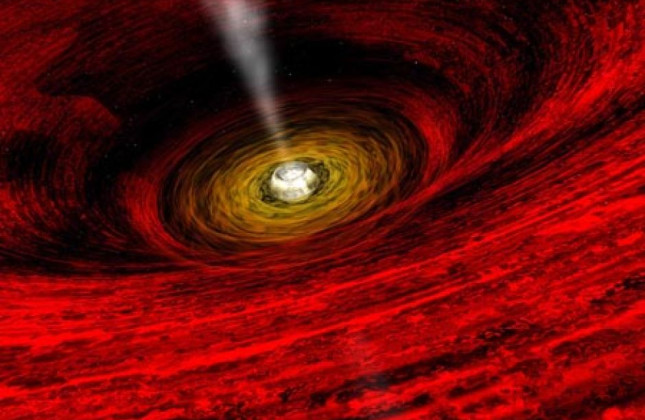Imagine to have a black hole spinnig around a normal companion star like our Sun. At some point of the evolution the black hole can start removing and devouring matter from the outer layers of its companion star, in a process known as accretion. During this phase the matter becomes so hot that it shines X-rays that are detectable from X-ray space telescopes orbiting around the Earth.
As the matter moves towards the black hole, it spirals in a so-called accretion disc. In General Relativity there are three frequencies associated at each radius r of the accretion disc. One is the frequency of a circular orbit in the equatorial plane of the disc. The second is the frequency of an elliptical orbit in the equatorial plane with mean radius r. The third frequency is that of a circular orbit inclined with an angle theta. These three frequencies are different and distinguished (in General Relativity) and they can be measured by observing the modulation of the X-ray radiation emitted by the hot matter that spirals around and towards the black hole (the mysterious quasi-periodic oscillations).
However, so far no black hole has ever shown these three frequencies at the same time. Today, in an exciting paper (just submitted to the Monthly Notices of the Royal Astronomical Society), a team of Spanish, Italian and English astronomers have identified the first black hole that shows all three frequencies at the same time. This has allowed the researchers to constrain relativistic precession theories that predict how matter should move around black holes and which frequencies should be observed in the X-ray data. The researcher have inferred in this way the mass (for the records: about 5 Solar masses) and the spin of the black hole, which are fundamental quantities that completely describe astrophysical black holes, according to the no-hair theorem.
Alessandro Patruno is a researcher at the Leiden University working in the field of compact objects (neutron stars, black holes and white dwarfs) and high energy astrophysics. In his blog Astrosplash Alessandro discusses news in his research field and posts updates on his work.
